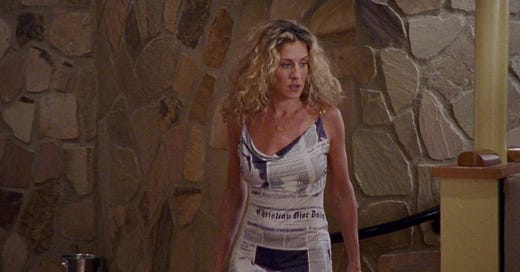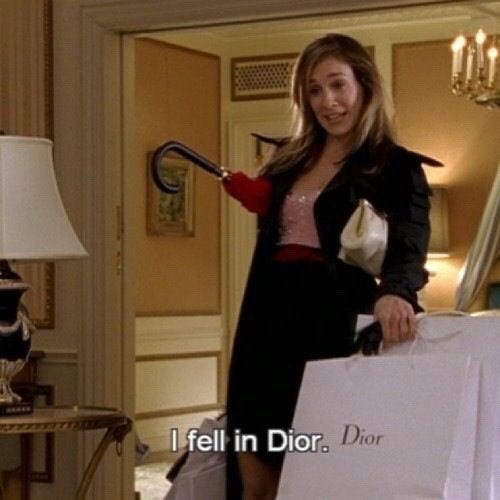The Occasional Timelessness of Dior
Diormania is back again, and so is "females acting like Carrie Bradshaw."
In some ways, Sex and the City has not aged particularly well. In others, it’s been something akin to a fine wine. A majority of the clothes, the fact that single women who basically just drink Cosmopolitans and chat about boys all day can own apartments, and the alleged availability of single men who are not podcasters or UX designers illustrating the former; some of the clothes, the fact that “going out” in New York always is centered around drinking, and the pitiful lack of emotional availability being good examples of the latter.
I have a love/hate relationship with the series’ (questionable) protagonist—you likely know her as Carrie Bradshaw, perhaps one of the most obnoxious woman characters to ever be developed. However, in may ways, she’s just like me, fr. Aside from the obvious “perma-desperation for a real love,” Carrie and I share something else: a reverence for French fashion. Whereas she’s maybe a little more trendy, I tend to go more timeless. (She’s a great example of the Dior girl, whereas I’m more of a Saint Laurent lady—the fashion house, not YSL himself, as you likely know that he designed for Dior.) Whenever I see Dior having a moment, I can’t not think of her. The most recent Paris Fashion Week featured a lot of Dior love, so of course I am once again thinking of Carrie Bradshaw and how it is that a brand and a character can both seem so timeless and so dated all at once.

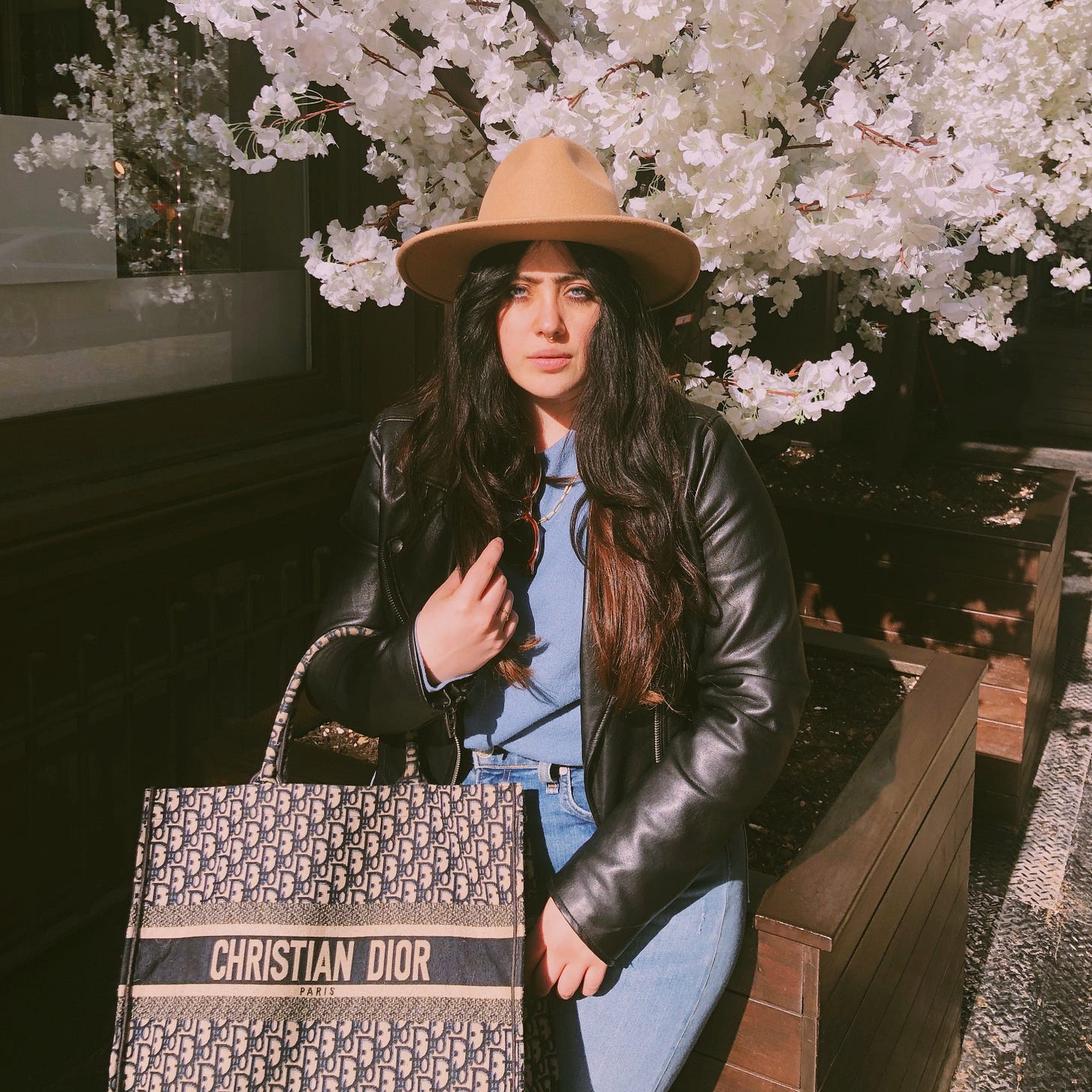
I appreciate fashion as a form of art because while it is ephemeral by design, the classics will always remain “the classics.” It’s accessible in that we all, in one way or another, contribute to it. It moves, it lives, it takes on a life of its own. That’s why the connection between fashion aesthetics and “cults of personality” will always intrigue me. Why do they exist, and what makes them rise to prominence? And more so, how do they remain fixtures in an ever-changing zeitgeist?
Dior is unapologetically old world, which is why it’s even more fascinating to me that it continues to be well-loved in a milieu that’s increasingly hostile to tradition. The character of Carrie Bradshaw holds a magnifying glass to the phenomenon of “conventions of traditional femininity when placed under the pressures of modernity.” Both of them address womanhood, just one is a little more resolute than the other. One showcases its timeless elegance, the other serves as a cautionary tale for any single thirty-something. Both are important.
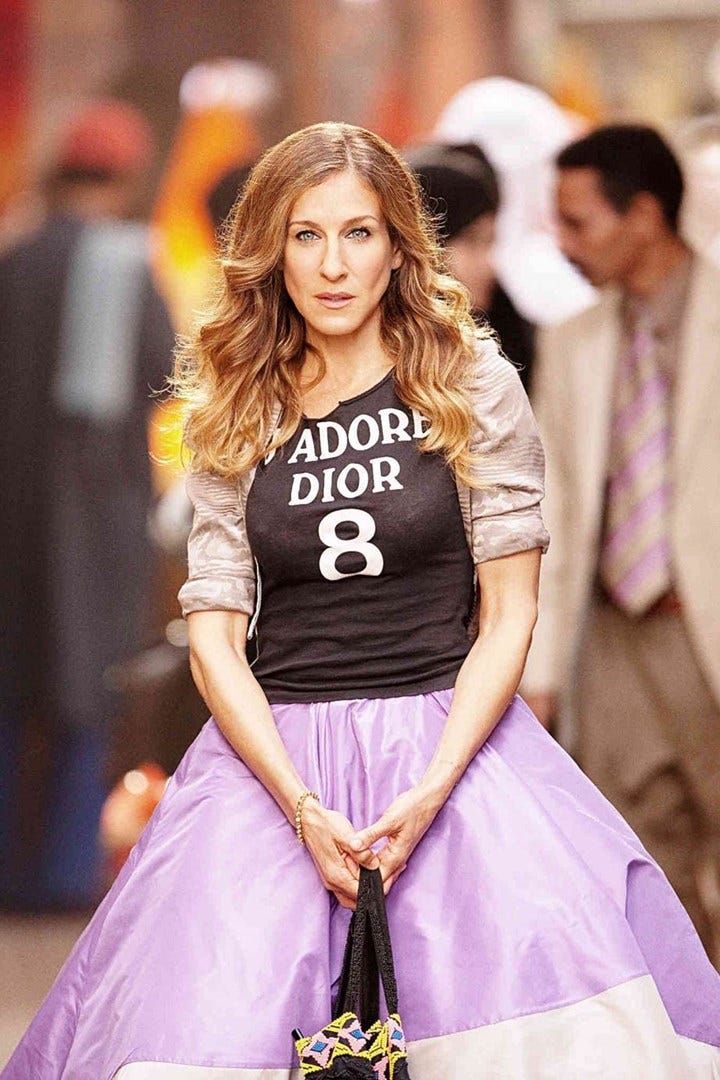

Where cultural moments ebb and flow, Dior stays the same. It incorporates trends but has timeless motifs that follow it throughout eras, and that is what defines it. Sometimes Dior fades into the background, while sometimes, it is at the forefront. It is eccentric without being overbearing, it is romantic in a refined-yet-whimsical way. Dior does not create a space for itself, but remains stalwart in its aesthetics and values, ensuring that it will always be relevant.
This is why SATC as a whole will never be as iconic as Dior. Anyone who watched that garbage fire called “And Just Like That” knows that it bent to modern conventions in the most maladroit way possible. (Dior would never.) Carrie Bradshaw, however, she’s just like Dior. The trope of a wayward woman, feminine to a fault (indecisive and moody), starved for affection and designer labels—she is a constant. She grew through different eras but stayed fundamentally the same. Sartorially, she updated her look, but still stayed “essentially Carrie.”
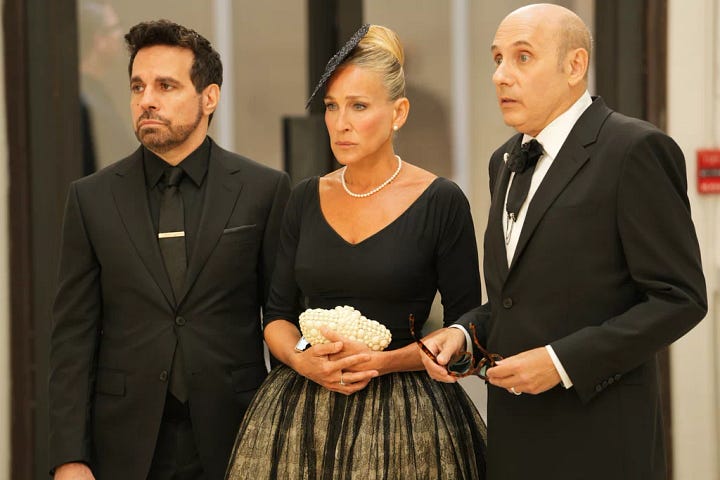
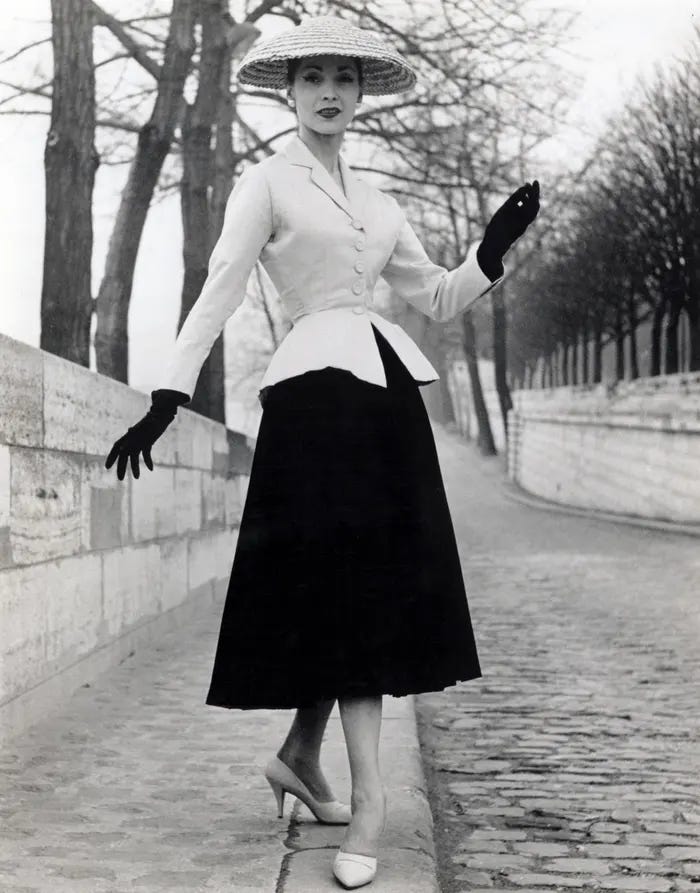
The Dior archives, much like the Carrie Bradshaw archives, will continue to transcend time and space. While they may seem very gauche right now (this current cultural moment does not send its best), cinched-in waists and being boy crazy will always be intrinsically feminine. Fight against them as we may, we’re hard-wired to be this way, which is why I choose to celebrate the aesthetics and stories that indulge that. Femininity does not necessarily mean we must be weak, which is something that Carrie and Dior both exemplify: brilliance in craftsmanship, the ability to speak your desires into reality—they’re pretty much the same, no?
There is virtue in lauding femininity for what it is at its core: elegance, meekness, and an occasional strong will. While many of these traits seem to be getting lost to the tides of time, the staying power that Dior and Carrie Bradshaw have managed to conjure up gives me hope. Traditional femininity hasn’t gone anywhere, it’s just maybe not trending right now. While the world is still full of Mr. Bigs and we’re all searching for a timeless and sensible bag to carry our necessities (and emotional baggage from time to time), we’re going to be alright.
Now… to talk myself out of buying a Lady Dior bag again.


